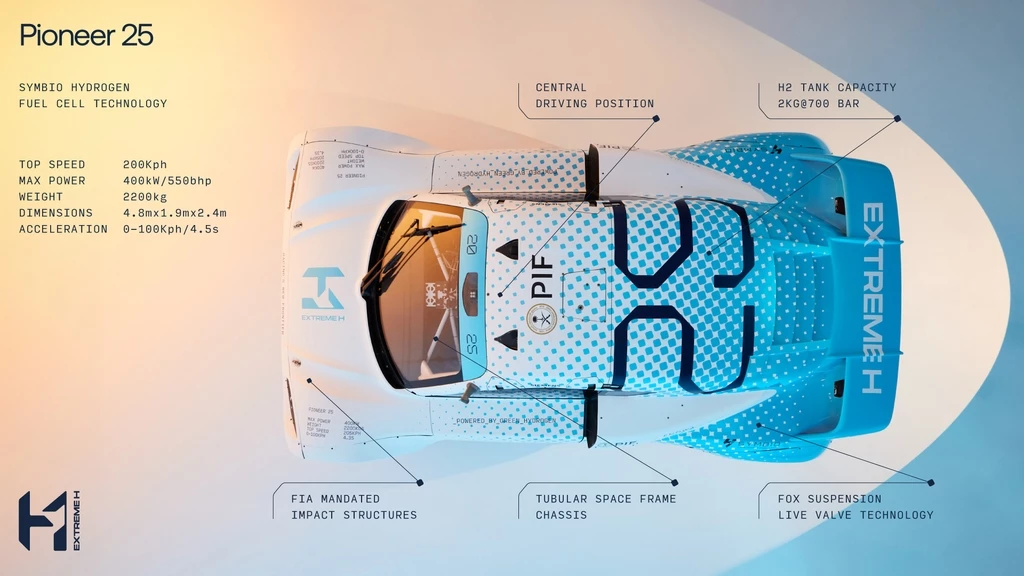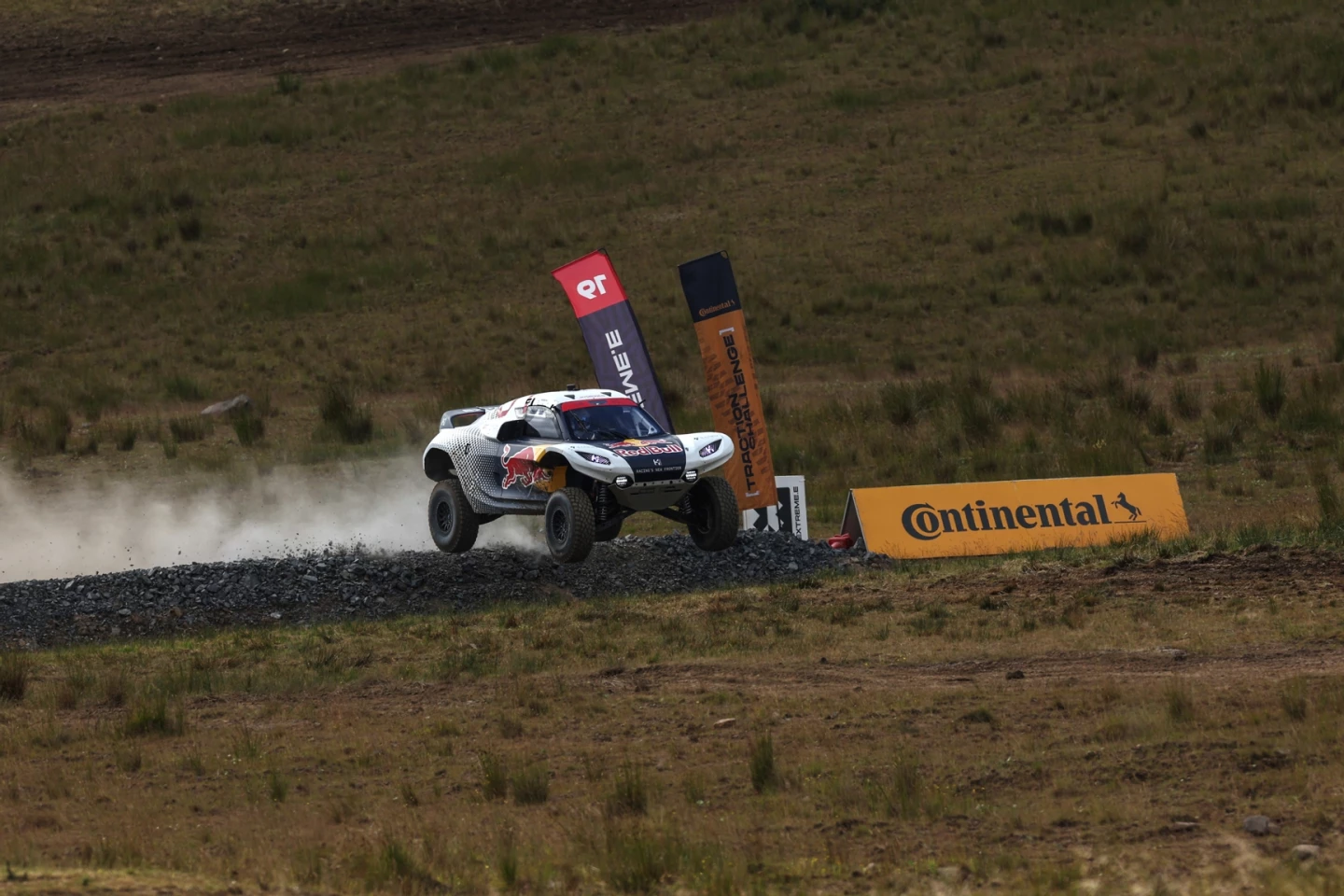The Pioneer 25 marks a momentous step in the world of motorsports as it passed the mandatory FIA crash tests. Developed solely for Extreme H, the world’s first hydrogen-powered motorsport, the car has a top speed of 200 km/h (124 mph).
There have been some iterations of functional hydrogen rally and race cars that have been constructed as prototypes over the years, but none have ever been able to be successfully homologated for competition. So Extreme H's successful testing is significant – particularly given that hydrogen is still relatively new and rare as an automotive fuel, and well known to be explosive in certain mixtures with air.
It's worth noting, though, that even where a tank is punctured and hydrogen gas escapes, it's about 14 times lighter than air, and thus tends to rush upward at a rate of about 20 meters per second (66 ft/sec) – so according to the US DoE, it's less likely to cause an explosion in practice than regular gasoline.
FIA’s crash test regulations were centered around side-impact and rollover safety. The Pioneer 25 will undergo additional track testing after the conclusion of these crash tests.

“We shouldn’t underestimate this,” said Extreme H’s technical director, Mark Grain. “It’s the first hydrogen race car that’s passed FIA muster. We’ve worked with the FIA to define these crash tests, and there’s been huge collaboration with constructive conversations back and forward to arrive at the loads and speeds and so on, but, ultimately, they have defined them, and we’ve designed and built a car that’s passed them.”
The Pioneer 25 is powered by Symbio hydrogen fuel cell tech with a hydrogen tank capacity of 2kg at 700 bar. The car gets a tubular space frame chassis with a central driver seat that is surrounded by FIA-mandated impact structures all around.
It can generate a maximum power of 550 hp (400kW), with a 0-60 mph time of 4.5 seconds while also having the ability to tackle gradients of up to 130% (52.4 degrees). The car's ride and handling are bolstered by a low center of gravity and enhanced suspension geometry.

"The chassis itself is much stronger, however, we’ve added carbon composite crash structures that are sitting over the two hydrogen tanks, and also for the side impact test, we’ve got composite structures on either side that are energy absorbing. The hydrogen high-pressure and low-pressure systems were also fitted during the tests,” stated Grain.
He adds, “The systems were pressurized for both tests, and the pressures within them were monitored as live data. That was to ensure the systems were not damaged and lost pressure. I’m pleased to say that in each of the tests, both high and low pressures were maintained and that’s the indication that there was no damage to the hydrogen system.”
Spark Racing Technology provides an exclusive package of standardized parts for each Pioneer 25 that would compete in Extreme H. Teams do, however, get some leeway to tinker with the front and rear fascias in a bid to imitate conventional IC motorsport cars.

Extreme H is the hydrogen-based zero-emissions version of the electric off-road motorsport, Extreme E. It's scheduled to begin in 2025, and will showcase state-of-the-art hydrogen engine technology in a competitive race setting, marking an ambitious stride in the movement toward clean energy. Extreme H is a single-make series, which means the car wasn’t developed with the need to find an edge over a rival.
The Pioneer 25 car was scheduled to compete in both of the September Island X Prix events in Sardinia, however, both of those races have since been postponed. As a result, the car will return to France, where a significant portion of its remaining testing will be completed. Theoretically, this gives Extreme H more time to finish Pioneer 25's development, but Grain maintains that nothing has changed and that operations are continuing per the exact same timelines.
“The worst thing we can do, from a technical and car point of view, is take our foot off the accelerator and lose the ability to go racing. If Alejandro (Agag, Extreme H founder and CEO) turns around and says, ‘I want to go racing on January 1,’ we want to be able to say, ‘Yes, we can do it,” adds Grain.
Before more track testing is done later this month and subsequently in October, Pioneer 25's next big milestone is to have its tanks and battery packs put through FIA resilience testing. All the cars participating in Extreme H are slated to go into production in the weeks to come, and respective teams ought to get their deliveries by the end of the year.
Source: Extreme H










